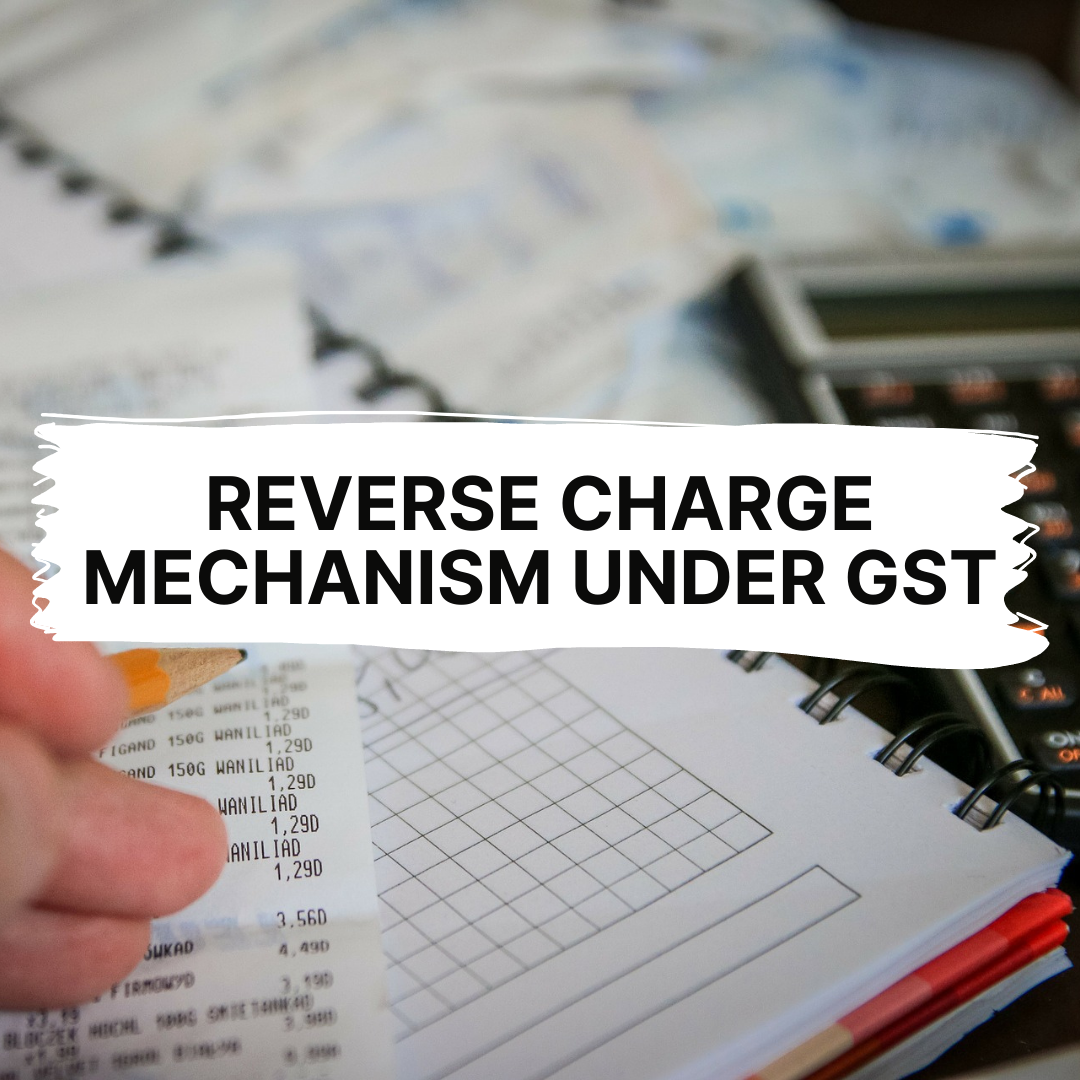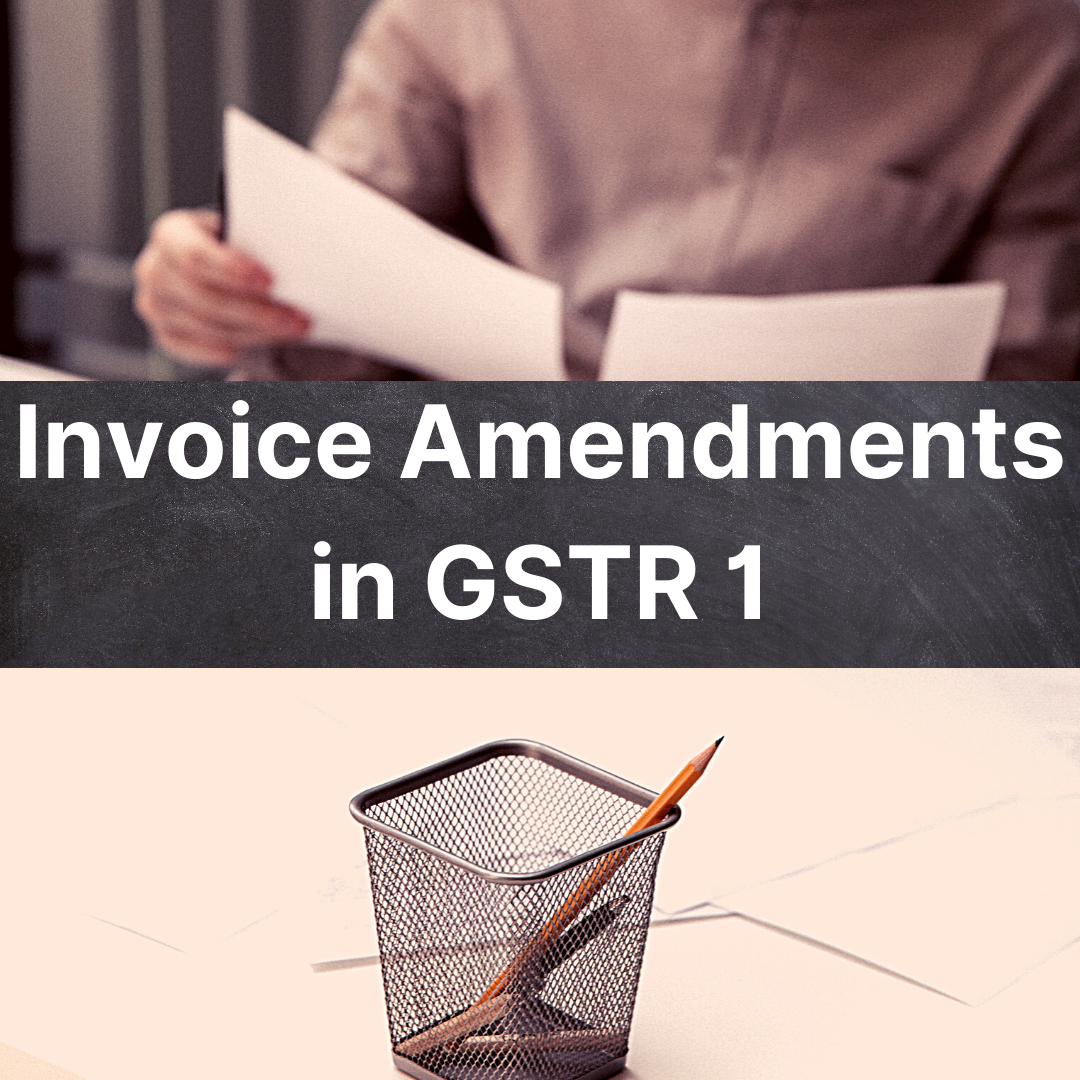Registered taxpayers are required to file a GSTR 1 every month or quarterly. While filing the GSTR 1 sales return, taxpayers must enter details about their sales and outward supplies.
Speaking of amendments to GSTR 1 invoices, you can amend each invoice and the details at the summary level can also be amended.
Since both these amendment types have their individual shortcomings, you must make sure you follow them carefully to avoid errors while filing GSTR 1.

By the end of this post, we will have touched the following points:
- Selecting Filing period to make Amendments
- Invoice Level Amendments
- Summary Level Amendments
- Details that cannot be Amended at Invoice Level
- Details that cannot be amended at the Summary level
- Time Allotted for Making Amendments
- Constraints for Amendments in Place of Supply
Selecting Filing period to make Amendments
The period of filing and making the amendment should be the same. For understanding, if you make an amendment in August then the period of filing the return will either be August or September. It will be August in case of monthly return filing and it will be September in case of quarterly filing.
Invoice Level Amendments
Here is the list of the type of amendments under the invoice level amendments:
- B2B
- B2C
- Export Invoices Amendments
- Credit/Debit Notes Amendments (Registered)
- Credit/Debit Notes Amendments (Unregistered)
- Export Invoices Amendments
Summary Level Amendments
This includes the following:
- B2C amendments
- Adjustments of advances amendments
- Advances received amendments (tax liability)
Details that cannot be Amended at Invoice Level
Let’s get a better look at the details that cannot be amended at the invoice level:
- It is not possible to amend the type of export- with/without payment.
- Changing a tax invoice into a bill of supply.
- A taxpayer cannot amend invoices that have already been accepted or modified by the recipient of goods. There will be no possibility of amending these invoices.
- Information like the supplier's or customer's location. Invoice GSTINs, reverse charges, and so on are based on original invoices. Therefore, these details should match those in the original invoice.
Details that cannot be Amended at the Summary level
The following are the factors that cannot be amended at the summary level:
- A new Place of Supply cannot be added or amended
- Nil-rated items and the HSN Outward Supply Summary cannot be changed
Time Allotted for Making Amendments
A revision can also be made in the later taxation period as long as the amended invoice date is the last taxation period for the original invoice. For a better understanding, we can assume that it cannot be possible to amend an original invoice dated 12/07/2021 in August if the amended invoice date is 31/07/2021.
Constraints for Amendments in Place of Supply
The summary level amendments include details of taxes based on the Place of Supply (POS) and tax rate. It is therefore only necessary to amend these details at the summary level.
In the event of an amendment to one detail, all linked details are also automatically updated.
An original point of sale is the basis of the amendments. It can be amended and replaced with another point of sale if certain conditions are met.
Example: Assume you have indicated 5% and 12% tax rates under a Place of Supply Maharashtra. If you need to make any changes to only 5% tax values, you will have to enter the amended values for 5% tax values again with only the original 12% tax values.
How can Deskera Help You?
The features of Deskera Books include accounting, financial management, inventory management, and much more.
Businessmen tend to be intimidated by GST and its related processes. Choosing the correct GST form can be confusing due to doubts. Therefore, it would be helpful in the long run if you grasp the topics such as GSTR1, GSTR 2A, GSTR 2B, and many other forms. Once registered, you may have to file one of the GST forms applicable to your business.
With Deskera, you can now manage your Journal entries easily. With one single interface, all remarkable features, such as adding products, services, and inventory, are at your fingertips.
Test out the tool to get a new perspective on your accounting system and experience how easy it is to implement.
Learning and familiarizing yourself with the process about how to manage and set up India GST with these short videos comes handy and convenient.
Managing your business contacts, invoicing, bills and expenses is easier with Deskera Books. Moreover, Accounting for Startups is also one of the concepts you can learn about, as well as KPIs that Startups ought to measure. You can also import opening balances and create chart accounts through it.
With Deskera Books, you can handle all aspects of your organization, including inviting colleagues and accountants.
Key Takeaways
Here’s a recap of the important observations from the post:
- When it comes to making amendments to the invoices in GSTR 1, the amendments can be made at the invoice level as well as the summary levels.
- The period of filing and making the amendment should be the same.
- There is a list of factors that can be amended and the the ones that cannot be amended.
- Invoice level amendments include B2b. B2C, export invoices amendments and so on.
- The summary level amendments include Adjustments of advances amendments, B2C amendments, etc.
- A revision can also be made in the later taxation period as long as the amended invoice date is the last taxation period for the original invoice
Related Articles













